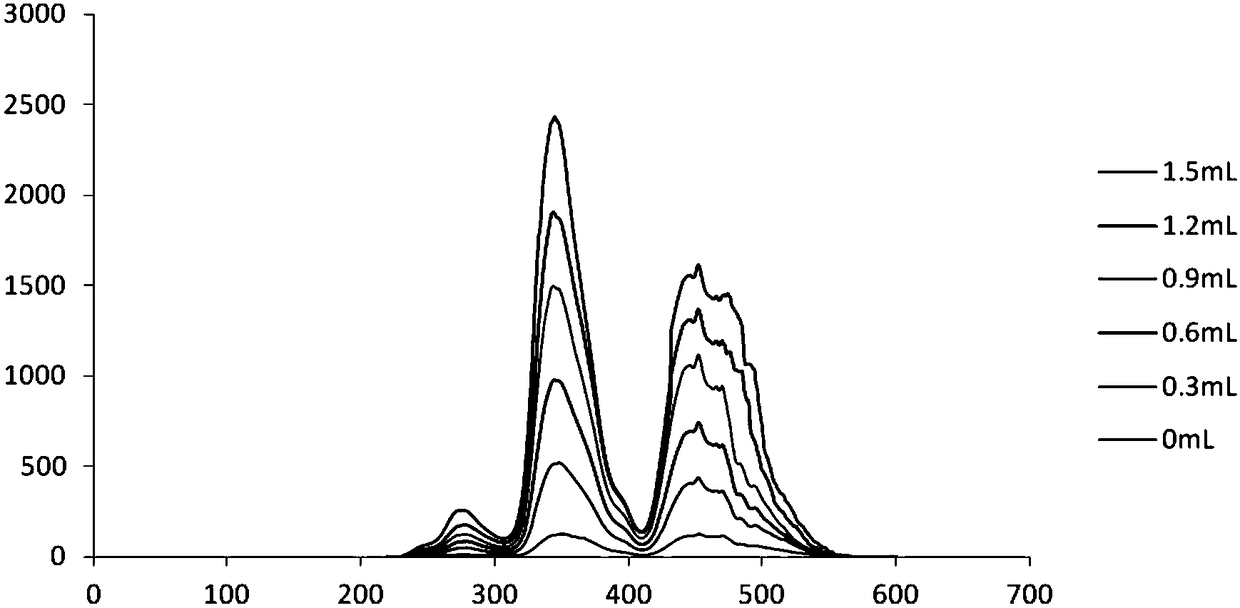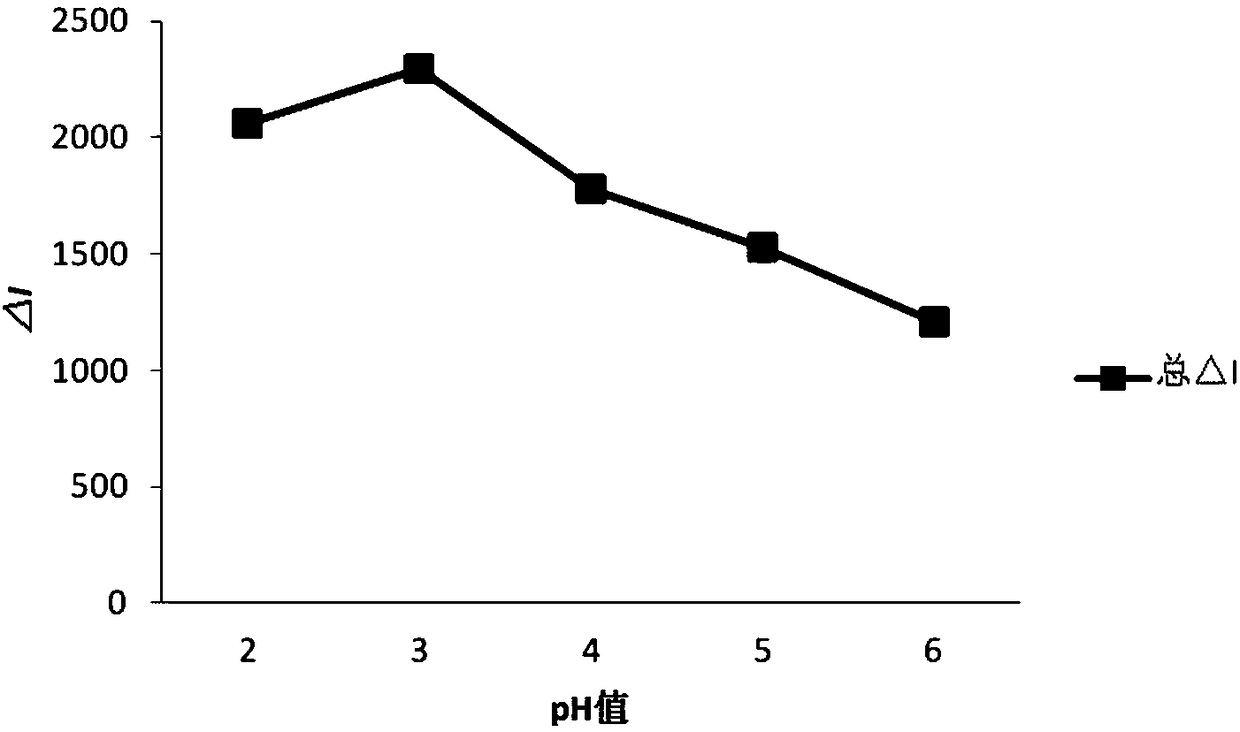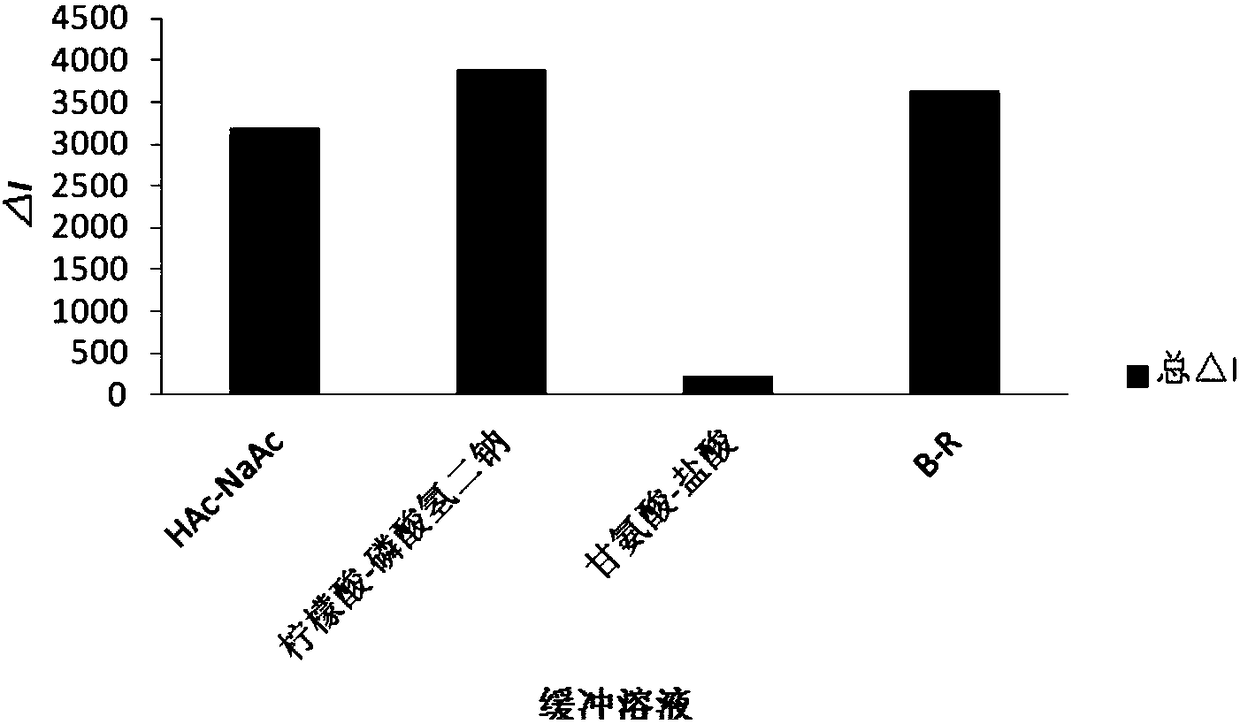Method used for measuring chitosan content through dual-wavelength resonance Rayleigh scattering
A technology of resonance Rayleigh scattering and chitosan, which is applied in the field of macromolecular detection, can solve problems such as difficult quantification and cumbersome operation techniques, and achieve the effects of simple operation, strong anti-interference ability, and cheap reagents
- Summary
- Abstract
- Description
- Claims
- Application Information
AI Technical Summary
Problems solved by technology
Method used
Image
Examples
Embodiment
[0058] A kind of method that dual-wavelength resonance Rayleigh scattering method measures chitosan content, it comprises the steps:
[0059] 1) Draw the standard curve of the chitosan concentration of ΔI and different molecular weights
[0060] Add 1.0mL chitosan standard solution with a certain concentration gradient to the 10mL colorimetric tube, 1.0mL pH=3.0 citric acid-sodium hydrogen phosphate buffer solution, 1.0mL concentration is 1.0×10 -3 mol / L bright blue solution, use triple distilled water to make up to the scale, and shake well, put it at room temperature for 10 minutes, take 1ml of the mixed solution and add it to a quartz cuvette, and put it on the F-2500 fluorescence spectrophotometer. lambda ex =λ em Carry out synchronous scanning, record respectively the resonance scattering intensity value I of each detection system containing chitosan at the maximum resonance Rayleigh scattering wavelength λ=345nm place system 1 , where the resonance scattering intensit...
PUM
 Login to View More
Login to View More Abstract
Description
Claims
Application Information
 Login to View More
Login to View More - R&D
- Intellectual Property
- Life Sciences
- Materials
- Tech Scout
- Unparalleled Data Quality
- Higher Quality Content
- 60% Fewer Hallucinations
Browse by: Latest US Patents, China's latest patents, Technical Efficacy Thesaurus, Application Domain, Technology Topic, Popular Technical Reports.
© 2025 PatSnap. All rights reserved.Legal|Privacy policy|Modern Slavery Act Transparency Statement|Sitemap|About US| Contact US: help@patsnap.com



